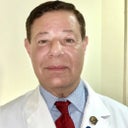Posted underJuvederm q&a
If Juvederm Didn't Work on my Smile Lines, What Are Some Good Alternatives? (photo)
I had to viles of Juvederm used on my smile lines. It was improved for about a month, but now it has returned to normal especially on one side. I am only 31 and hate that my face looks like it is sagging. Any other products work? My physician only works on faces and has great reviews so I would not think it was the technique. Would another vile help? Or am I just out of luck?
Answers (17)
From board-certified doctors and trusted medical professionals
Dr. Steven J. Pearlman, MD, FACS

Dr. Steven J. Pearlman, MD, FACS
Board Certified Facial Plastic Surgeon
Answer
Dr. Kenneth Hughes, MD

Dr. Kenneth Hughes, MD
Board Certified Plastic Surgeon
Answer
Dr. Paul S. Nassif, MD

Dr. Paul S. Nassif, MD
Board Certified Facial Plastic Surgeon
Answer
Dr. Melissa Chiang, MD, FAAD

Dr. Melissa Chiang, MD, FAAD
Dermatologic Surgeon, Board Certified in Dermatology
Answer
Dr. Nelson Lee Novick, MD

Dr. Nelson Lee Novick, MD
Dermatologic Surgeon, Board Certified in Dermatology
Answer
Dr. Evan Ransom, MD, FACS

Dr. Evan Ransom, MD, FACS
Board Certified Facial Plastic Surgeon
Answer
Dr. Jamil Asaria, MD

Dr. Jamil Asaria, MD
Certified Facial Plastic Surgeon
Answer
Dr. Misbah Khan MD, FAAD, FACMS

Dr. Misbah Khan MD, FAAD, FACMS
Dermatologic Surgeon, Board Certified in Dermatology
Answer
Dr. Kimberly Finder, MD
Dr. Kimberly Finder, MD
Dermatologic Surgeon, Board Certified in Dermatology
Answer
Dr. Ramona Behshad, MD
Dr. Ramona Behshad, MD
Dermatologic Surgeon, Board Certified in Dermatology
Answer
More Juvederm Questions
See all Juvederm Q&AWE SEND PRETTY
EMAILS
What’s trending? Who’s turning heads? Which TikTok myths need busting? We’ve got you. No fluff, no gatekeeping—just real talk. Get our free, unfiltered newsletter.